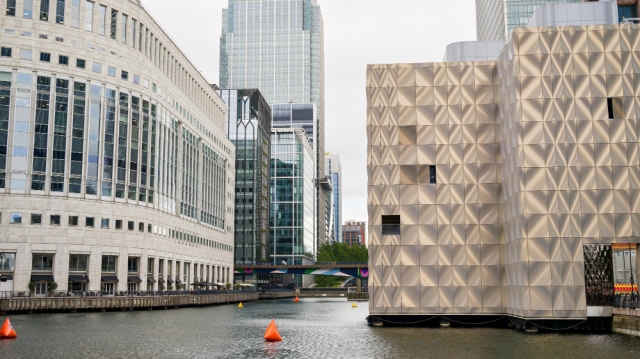If you asked Johannesburg tenants five years ago where to plant a head office, many would have defaulted to Sandton. That centre of gravity is shifting. Bryanston has been quietly winning briefs from tech firms, media companies, financial services teams, and fast-growing SMEs that want easy access to the north without the congestion and premiums that come with Sandton Central. In 2025, the node looks resilient, well serviced, and increasingly competitive for quality office space.
Location still matters
It sits on the ridge between Randburg and Sandton with immediate access to William Nicol Drive, Main Road, and the N1. That means shorter trips for staff coming from Fourways, Midrand, and the West Rand. The Gautrain bus routes and frequent taxi corridors tie the node to Sandton and Rosebank, while rideshare coverage is strong. For a company weighing staff commute times against rental line items, this geography alone can tilt the decision.
A mature node with modern buildings
One of Bryanston’s strengths is its mix of established parks and newer P-Grade stock. You will find secure office campuses with landscaped common areas, 24/7 access control, and reliable facilities management. Many buildings now offer backup power, water storage, and high-capacity fibre. Several have achieved or are pursuing green building certifications through the Green Building Council of South Africa. These features are not just lovely to have during load shedding. They protect productivity and help corporates meet ESG reporting requirements.
Not every business wants a 2,000 m² floor plate. Companies looking for offices to rent in Bryanston have the flexibility that allows tenants to right-size without paying for space they do not need. Landlords are also more open to subdividing larger floors to meet demand. If you are growing, expansion options within the same park help you scale without another relocation.
Amenity and lifestyle help with retention
People work more effectively when surrounded by the tools and resources they use. It has a dense set of daily-use amenities: Nicolway and Epsom Downs for grocery and pharmacy runs, a wide spread of gyms and medical suites, and a restaurant scene that works for both a quick coffee and a client lunch. The Campus remains a landmark, and the Sloane Precinct has added modern retail and dining options that make after-work errands simple.
Cost and lease structures to look out for
When comparing options, line up apples with apples:
-
Gross vs net rent: Confirm what is included and model for annual escalations.
-
Operating costs: Security, landscaping, cleaning, and common area electricity can vary by park.
-
Parking ratios and pricing: Most buildings offer open, shaded, and basement options. Ratios affect hiring and carpool policies.
-
Tenant installation (TI): Ask about allowances for carpets, glazing, lighting, and joinery. A sensible TI can make a fitted space turnkey.
-
Incentives: Rather than chasing a month of free rent, focus on what reduces your effective cost over the full term.
A three to five-year lease remains the standard for corporates. If your headcount is volatile, consider a shorter initial term with negotiated renewal options and an explicit sub-letting clause.
Space planning that works
When reviewing space, walk through it with your team leads and test the basics:
-
Where do people queue for coffee, and will that noise spill into your meeting rooms?
-
Can finance close the month-end without headphones?
-
Is there a space for quick stand-ups that does not block circulation?
-
How many rooms can be converted to Teams-ready pods without major works?
IT, power, and resilience
Could you check the carriers in the building, typical failover options, and whether the landlord supports diverse routing? Backup power is now standard for quality stock. Could you ask about generator capacity, how lifts and HVAC are prioritised during outages, and whether the building has solar or battery augmentation? The goal is to achieve steady uptime without over-investing.
Security and access control
Reputable office parks in Bryanston take security seriously: gated entrances, cameras, on-site guards, and licence-plate recognition are common. Confirm access protocols for visitors, after-hours work, and deliveries.
Which businesses fit Bryanston best
The node suits firms that value quick east-west and north-south movement, client access to parking, and predictable operating costs. We see strong take-up from software and digital agencies, content and production houses, professional services teams, and regional offices for national retailers and FMCG groups. If your clients are spread across Fourways, Midrand, and Sandton, Bryanston places you in the middle without asking staff to cross the busiest part of the Sandton core every day.
A simple selection checklist
When you shortlist properties, run this quick filter:
-
Travel time for your top 20 employees from home to door during peak hour.
-
Confirmed backup power and HVAC during outages.
-
Fibre and failover from at least two carriers.
-
Parking ratio that matches your real headcount plan.
-
TI allowance aligned to the fit-out you need.
-
Expansion options in the same park within 12 to 18 months.
-
Walkability to retail and banking for lunchtime admin.
-
Lease clarity on reinstatement, signage rights, and early exit.
By ticking most of these boxes, you will reduce unexpected costs later.
Start with well-managed parks along Sloane Street, Main Road, and Bryanston Drive. Properties near Nicolway, The Campus, and Epsom Downs tend to balance access, amenities, and security. If your team relies on public transport, map your options against Gautrain bus stops and high-frequency taxi routes. If you host regular client meetings, buildings with on-site guest parking will save you time and goodwill.
Final word
You get the reach of the northern suburbs, the services that staff expect, and the building quality that keeps operations steady. For many companies, that combination beats a prestigious address that creates extra friction in daily work.






